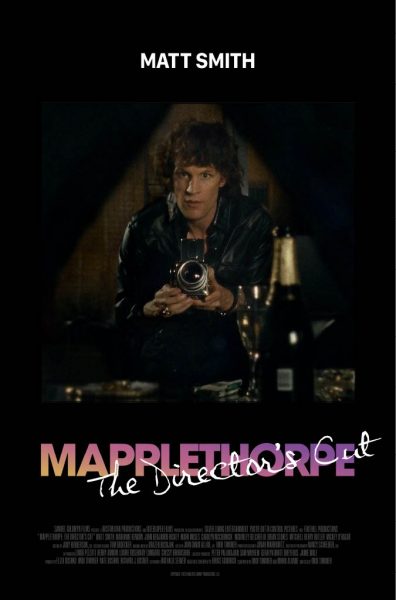Ondi Timoner’s “Mapplethorpe: The Director’s Cut” Invites You to Take a Second Look
The history of Robert Mapplethorpe – one of the most iconic and controversial photographers of the ’70s – is chronicled through film, documents, books, and personal retellings. And yet, the man still remains an enigma to those in the modern world. You may know his flowers; stark white calla lilies on sharp, black backgrounds. You might even know some of his popular portraits of legends like Arnold Schwarzenegger and Patti Smith. But what you might be missing are the avant garde pieces that tested the boundaries of decency, even during a time when expression was encouraged. Enter Mapplethorpe: The Director’s Cut, directed by Ondi Timoner.
Robert Mapplethorpe entered the scene not with a whimper, but with well… banging. Men particularly. Yes, he shot Polaroids of his loved ones, but the work that would give him the most attention were his architectural nudes and frank depictions of niche gay communities in the ‘70s. There was an emphasis on S&M, leather and chains along with blatant male nudity that terrified polite society – almost as much as it titillated them.
It’s of interest because he was a queer icon before anyone really thought to keep track. His life was tragically ravaged by AIDS and we lost him too soon, but his impact on art is one that has stood the test of time – if you know where to look. When I interviewed Nick Cammilleri, the director of HBO’s documentary The Lady and the Dale, I asked him about how Elizabeth Carmichael could make such an impression, but I only knew of her because of an Unsolved Mysteries special. He shared some words that his co-director Zachary Drucker shared with him. She said that Trans history gets lost, and by extension, certain facets of queer history gets lost, too.
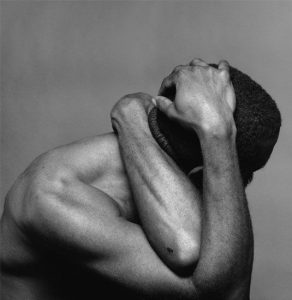
We saw a reckoning of that this summer, when BIPOC heroes of the Stonewall movement were uncovered. In my opinion, it seems that parts of queer history are sanitized to make it more potable or even tolerable. As times change, our barometers for acceptability also change. Now we live in a time where expression is at the tip of our fingers. We can access so many different experiences in a matter of seconds. While there are definite drawbacks to this level of immediate access, one positive is we’re quick to gain a “seen it all before” attitude. One that can recognize the beauty behind the rebellion, and can appreciate it, rather than try to hide it.
This is how you get a four-part miniseries about a Trans conwoman who took on the automobile industry. And it’s also how you get a biopic about Robert Mapplethorpe, and you can tell his full story. One that includes fisting and fetishizing and paints him as equal parts saint and sinner.
Timoner and her team made the movie and released it in 2018. Prior to its release, the movie was edited and cut down before screening at that year’s Tribeca Film Festival. Although the cut was important, Timoner felt there was something missing. She was able to re-edit the original cut and is releasing it as Mapplethorpe: The Director’s Cut.
I sat down with Timoner to talk about her taking on this endeavor and the beauty she saw in the story of Robert Mapplethorpe.
The Geekiary: I was a big Tom of Finland fan and I was very interested in subversive queer artists. While I’d heard of Mapplethorpe, I hadn’t really done a deep dive into his life. I knew his flowers and some of the silhouette portraits, but I had no clue not only about the more graphic versions of his work, but also about the popular stuff. I had no idea he shot for Arnold Schwarzenegger. Tell me your background with Robert Mapplethorpe and what got you interested in doing this project.
Ondi Timoner: So you know, Mapplethorpe was probably one of – if not the – most controversial artists in our history. Mostly for his show “The Perfect Moment”, which combined his most extreme S&M X-rated portfolio work along with his flowers in one show. It was his dream to have one show that really showed the spectrum of his work. This happened right after he died in 1989.
***
Mapplethorpe: The Director’s Cut stars Matthew Smith (Doctor Who, The Crown) playing Mapplethorpe. Smith landed the role before The Crown when he was still mostly  unknown. He fills the role beautifully and his dedication shows in every scene, even through a slightly uneven Queens accent. It’s easy to forgive and forget and get lost in the role. The desperation of Mapplethorpe’s dream to not only be seen as a legitimate artist (his medium was Polaroids, which at that point were not considered collectible), but also to have his entire catalogue judged fairly is felt innately through the film.
unknown. He fills the role beautifully and his dedication shows in every scene, even through a slightly uneven Queens accent. It’s easy to forgive and forget and get lost in the role. The desperation of Mapplethorpe’s dream to not only be seen as a legitimate artist (his medium was Polaroids, which at that point were not considered collectible), but also to have his entire catalogue judged fairly is felt innately through the film.
His wish didn’t fully come true before his passing, but he carefully put steps in place to get there and bet his reputation on the success of the outcome.
OT: I had a Mapplethorpe calendar of his flowers myself and I had no idea the full range of his work. I’d made my movie Dig! and was approached by a production designer by the name of Bruce Goodrich with a script of his own. He took all the courtroom drama and looked at the man himself through the eyes of “The Perfect Moment” controversy.
***
The controversy Timoner is referring to is briefly mentioned at the end of Mapplethorpe: The Director’s Cut. After Mapplethorpe’s show “The Perfect Moment” opened, it was immediately met with outrage – from both sides. A tour across the country in seven cities was planned, but after initial success, it met trouble at Washington DC’s Corcoran gallery. Following, each stop presented its own barrier met by the will of the people who demanded free expression. Though the Corcoran show was cancelled by the director, a group of protesters projected ten of Mapplethorpe’s photos on the outside wall of the gallery. The show was then hung across town and attracted early 50,000 visitors.
You might think that a few protestors and show cancellations aren’t that big of a deal, but soon legal battles ensued calling obscenity laws into questions. Mapplethorpe’s estate wasn’t just on trial for the content of his work, but for homosexuality, fetish lifestyles, and pornographic flowers. It was the idea of a man who could inspire such vigor that really drew Timoner to Mapplethorpe. She wanted to know his origin story.
OT: I thought it would really be exciting to make this project into a coming of age story that is like an anthem for artists. Mapplethorpe came into his sexuality, realizing he was gay by taking photographs. And it was through his art that he was able to kind of enter these worlds that were deemed obscene, and underworlds back in the late ‘60s. And then being who he is, decided that everyone should see this world and that everyone should understand the beauty of LGBTQ culture which didn’t even have that name back then. So he took the people of that world and put them in a studio and turned it into formalist sculptural work that can be collectible. That could be on a museum floor and even turn photography into a collectible art form.
***
There’s a thrilling yet heartbreaking scene in Mapplethorpe: The Director’s Cut where we see Mapplethorpe as he begins to take pictures and seems to be sexually drawn to the subjects, who happen to be beautifully male. To this point he was primarily a painter or produced mixed media pieces. Through a chance encounter with artist and filmmaker Sandy Daley at the famed Chelsea Hotel, Mapplethorpe regained his love of the camera. Mapplethorpe: The Director’s Cut includes new archival footage from Mapplethorpe’s childhood and several pictures show him with a camera, though it’s known he avoided it until his meeting Duncan later. Timoner made the narrative choice to connect Mapplethorpe’s reunion with the camera to the discovery and acceptance of his sexuality.
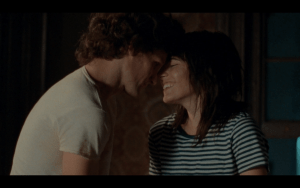 First we see him in a relationship with punk icon Patti Smith (played lovingly by Marianne Rendon of Imposters). In a pivotal moment he tells Patti that she can’t leave him, because if she does, then he’ll be gay. She leaves and the next moments are filled with Mapplethorpe’s struggle to avoid a calling he can’t resist. One of his subjects makes a move on the signals Mapplethorpe has been sending and we see his internal struggle played externally as he pushes the man away, while pulling him back in equal parts of want.
First we see him in a relationship with punk icon Patti Smith (played lovingly by Marianne Rendon of Imposters). In a pivotal moment he tells Patti that she can’t leave him, because if she does, then he’ll be gay. She leaves and the next moments are filled with Mapplethorpe’s struggle to avoid a calling he can’t resist. One of his subjects makes a move on the signals Mapplethorpe has been sending and we see his internal struggle played externally as he pushes the man away, while pulling him back in equal parts of want.
The enigmatic thing about Mapplethorpe is he never does anything in halves. He wanted to be a photographer, so he demanded it be seen as legitimate collectible art. He discovered he was gay and he demanded the attention of the world to his experience. He was dissatisfied by dissatisfaction and refused to accept “No” for an answer. And the world appears to be better for it.
OT: I thought of bringing this mercurial figure to the screen in a way that was really engaging in this kind of unfolding adventure of this really imperfect life in the perfect frame. The dichotomy and the conflict in that, along with the role the Catholic church had to play and the imagery and how all of that came to be, it would be something that would help people to become who they truly are. And inspire more artists to come up in this world as well as more people to come out and to feel accepted. He really pushed the boundaries of what we understand to be *fine* art and also of what we understand to be acceptable in our culture. I thought it was a really important story to tell and I wanted to make a scripted film to bring him alive.
***
Timoner praises Matt Smith’s dedication. To account for Mapplethorpe’s sickness towards the end of his life, Matt Smith lost a lot of weight and the movie was filmed backwards. Over the course of only 19 days and 35 locations around New York City, her team filmed four generations of Mapplethorpe’s life on Super 16 and Super 8.
TG: In Matt Smith’s performance, he really does disappear into the character. I felt very let into Mapplethorpe and the world he inhabited. Shooting the film in 19 days is amazing. That is quite a feat because one thing that the film does really well is it feels lived in. It feels like a lot of time and effort was given to create the scenery that really speaks to your preparation. I also loved when you mentioned it was shot on Super 16 because the look of the movie was one of the first things I noticed. I wrote down a note saying, “was this shot on film?” so I absolutely love that stylistic choice.
OT: Thank you! It was extremely ambitious, there was quite a lot of tension regarding the schedule because of the schedule and it was incredible what [Smith] and the rest of the cast pulled off. Also our DP Nancy Schreiber and our production designer Jonah Markowitz. It’s just exquisite work. We tried as hard as we could to get to that high bar and really bring the internal conflict he had as someone who was gay, and the relationship with Patti Smith, leaving his relationship with his family and leaving his relationship with the church. We had a different color palette for every period to bring every period to life. The side lighting, the back lighting, we had a lot to adhere to in a very short period of time.
***
The effort behind the scenes shows in the quality of the finished product. The ‘60s are promising and bright, the ‘70s are psychedelic and bold, and the ‘80s present a cold stark contrast to the rest of the film. The film was released to critical acclaim in 2018, but Timoner was excited to revisit the project by editing her original director’s cut.
OT: The actual original version of the film was edited before it premiered at Tribeca. There was no Mapplethorpe as a child in the church in the official release – the whole decade of the 1950s is not there. The church itself as a real character is not in there, but to me that was very important because he grew up with a great love for the church.
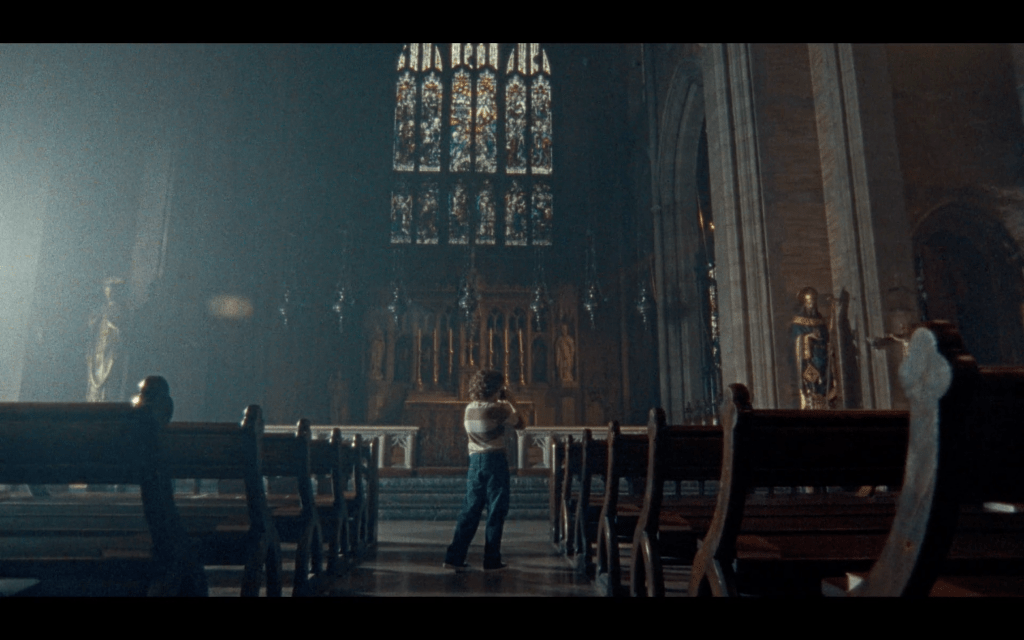
In the year of our Lord 2021, we’re still as a culture having discussions on the connection, be it opposition or otherwise, between religion and homosexuality. Young pop artist Lil Nas X has released a video for his song “Montero (Call Me By Your Name)” which showcases him on a stripper pole that goes all the way to Hell. Those in the queer community have been told – despite sometimes being raised by that community for years – that they’re suddenly not welcome because of who they are. The same confusion that exists when deciding to come out is the same that exists when deciding whether to turn your back on the church.
While Mapplethorpe seemed to turn away from religion, there is definitely something spiritual in his art.
OT: A lot of his work was colored by [the church] and larger than life because of that. Simultaneously he was somewhat tortured by the fact that he felt in some ways he’d made a deal with the devil, and being gay.
***
Mapplethorpe is portrayed as still being an iconic figure, but also a real, flawed, imperfect person. He’s more lovable and there’s more time given to the relationship with Patti Smith.
OT: You get to understand the heartbreak of that on a deeper level.
**
Timoner also restored the original score by Brian Wozniak as well as some of the songs she’d originally selected for the soundtrack. She even got to recolor it adding some religious iconography to the photos in the show, presenting a view of what Mapplethorpe might have used for reference and inspiration.
Timoner is most proud of the editing she was able to do for the death of Mapplethorpe.
OT: To me it really felt like what Mapplethorpe, in my view would have gone through. And that was cut much shorter in the official release, so if for nothing else I’m really happy that the death was restored.
***
At its core, art is its own kind of therapy. When we think of the trauma that people go through, I think that artists of that nature tend to be seen as exempt. They get labeled as having too big of a personality, being drama queens, or sometimes even aliens sent to Earth. But really, they’re just people that are trying to work through whatever their trauma is to see the beauty inside. In Mapplethorpe: The Director’s Cut, we see this inner beauty through the artist’s trauma. We see his fascination with the church, his love for it. His admiration for his father and how he seems to lose it all because of his sexuality.
There’s so much more to the film including the relationship Mapplethorpe had with his brother Ed (who professionally went by Edward Maxey at his brother’s request. He’s since posthumously reclaimed the family name), his most lasting lover and benefactor Sam Wagstaff and a toxic relationship with Milton Moore. And throughout a film as fully comprehensive as Mapplethorpe: The Director’s Cut, it never feels too long or bloated.
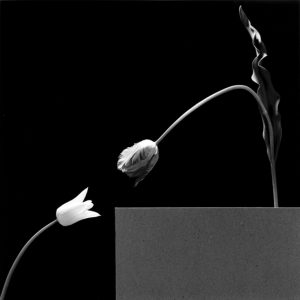
The film is the very best in a biopic, entertaining and inspiring while showing you the life of someone whose story has remained quiet for too long.
OT: Robert was all things at once and it’s very important to my work to really explore and allow the gray area. He was a guy who could be very, very bad. He was also a guy who could be really, really loved and kind and he was more than anything, very brilliant. And so he lived sort of a tortured life and the imperfection of all of his relationships didn’t fit into that frame. The more he became tied to making the perfect frame, the less tolerance he had for everything else, I think. And that’s what I hope to portray in the film, but with a lot of compassion. I have a great love for him.
Mapplethorpe: The Director’s Cut will be available on VOD Friday, April 2nd.
Author: StickyKeys
Help support independent journalism. Subscribe to our Patreon.
Copyright © The Geekiary
Do not copy our content in whole to other websites. If you are reading this anywhere besides TheGeekiary.com, it has been stolen.Read our

